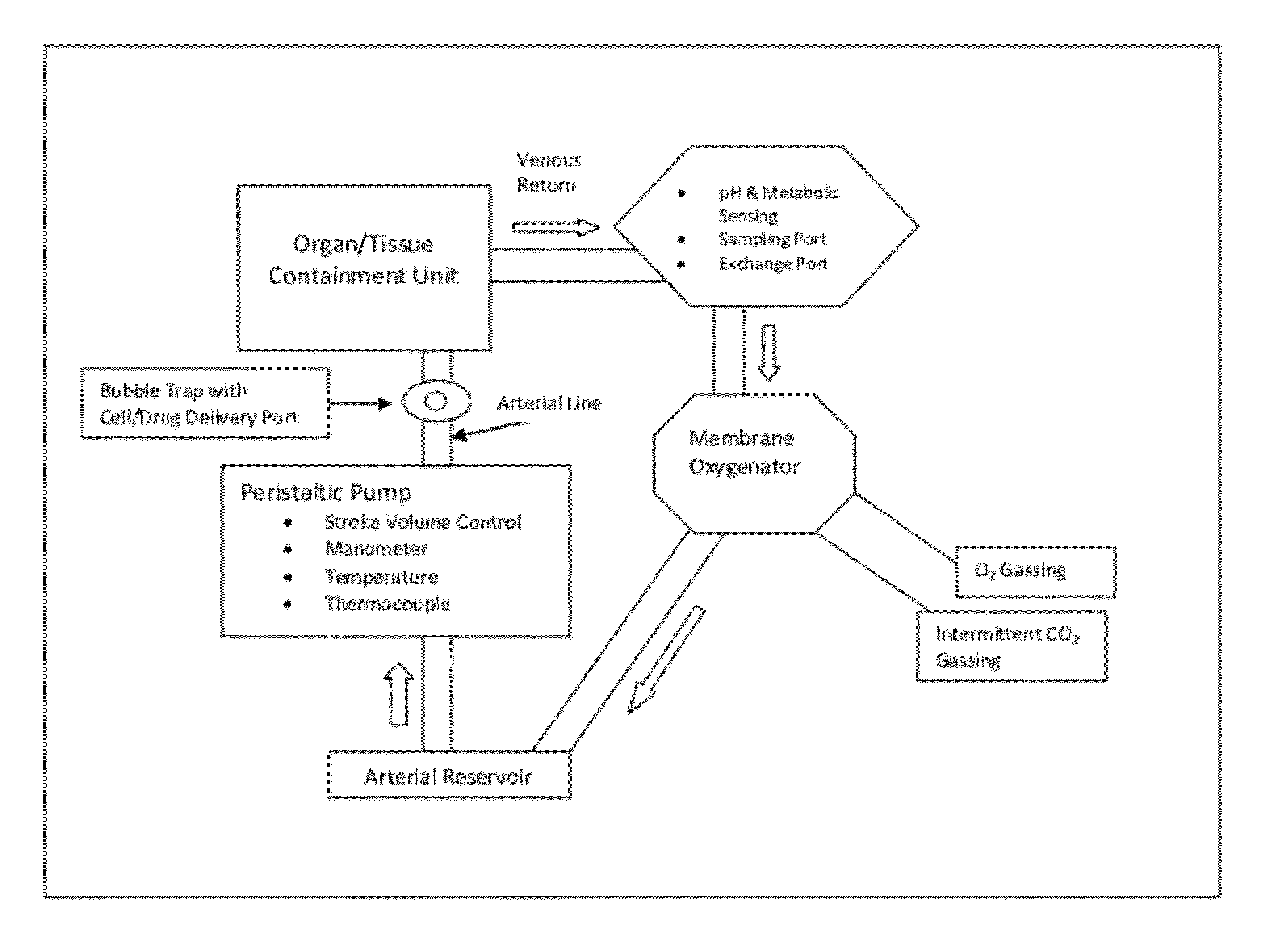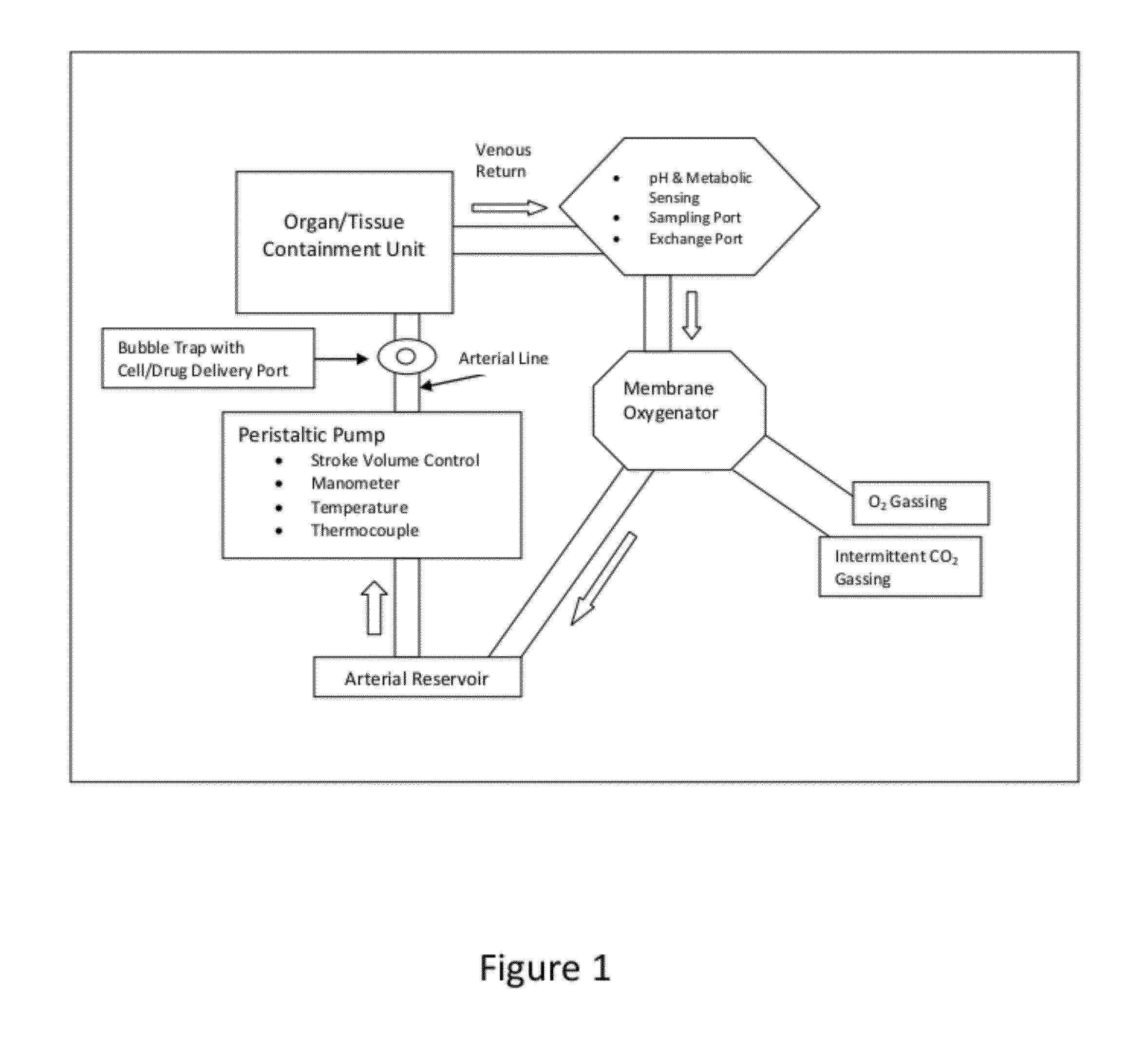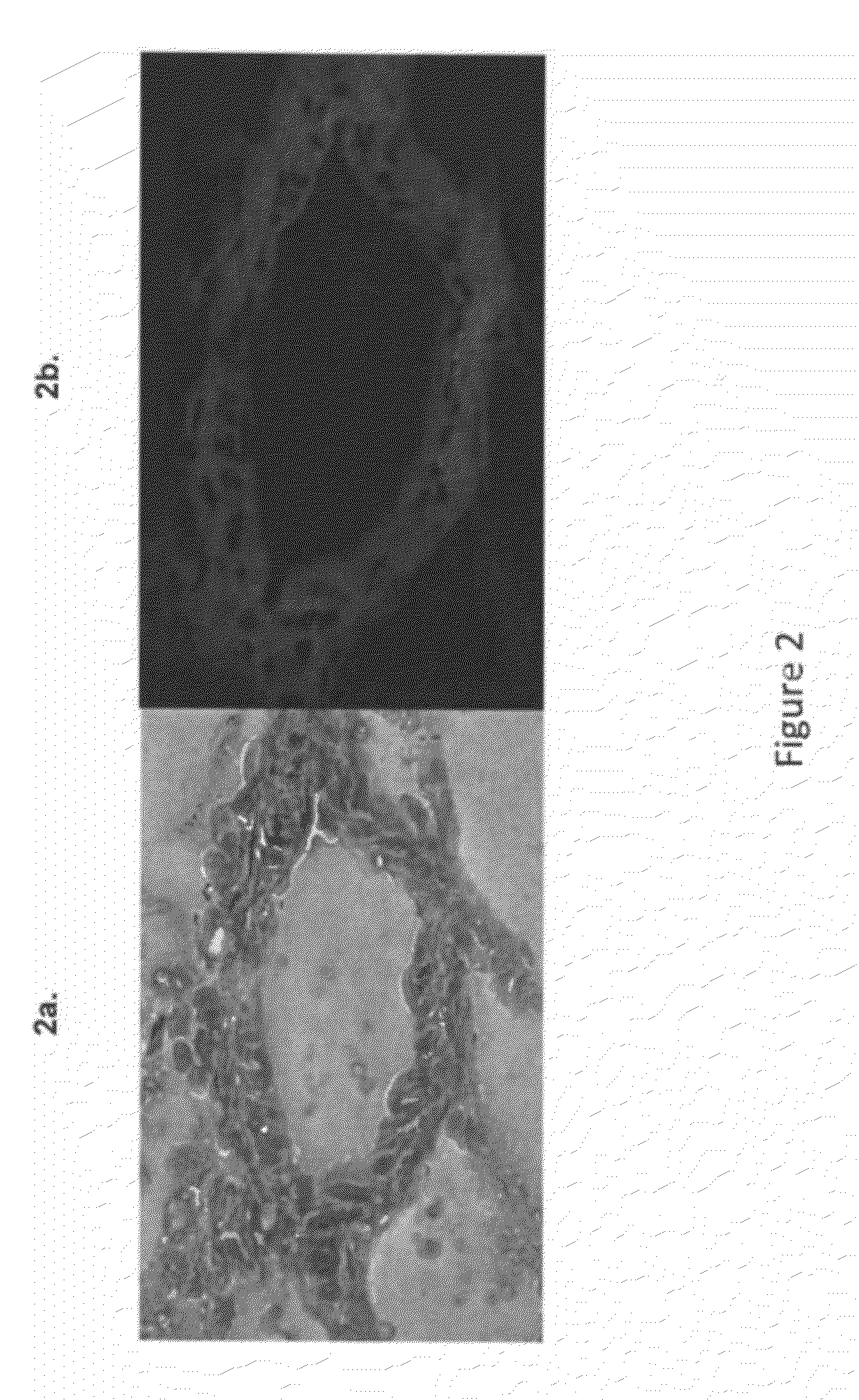Delivery system for cell-based therapies
a cell-based therapy and delivery system technology, applied in the field of cell-based therapy delivery, can solve the problems of reduced red blood cell and white blood cell count, loss of appetite, and increased risk of infection and bleeding, so as to reduce infection and bleeding, reduce red blood cell count, and eliminate significant side effects
- Summary
- Abstract
- Description
- Claims
- Application Information
AI Technical Summary
Benefits of technology
Problems solved by technology
Method used
Image
Examples
example 1
Establishing the Organ in the Delivery System
[0057]The organ or tissue to be treated is established in a sterile organ chamber of a warm perfusion system as described in U.S. Pat. No. 6,642,045 (incorporated herein by reference.) A cannula is placed in the major arterial vessel within the organ or tissue through which the warm, oxygenated, pH regulated nutrient solution is delivered via a pulsatile perfusion pump. The pH, temperature, pressures, nutrient composition, partial pressure of oxygen and carbon dioxide of the perfusate are tightly controlled during perfusion within a pre-determined range to support optimal metabolic rate.
[0058]Sampling ports provide for close monitoring of metabolism and synthetic functions of the perfused organ. The effluent from the perfusion through the organ or tissue is collected in a venous return reservoir where the re-circulated solution is reheated, reoxygenated, nutrients replenished and the pH adjusted. After such treatment, the circulating solu...
example 2
Seeding of Cells in the Organ
[0059]Human progenitor renal epithelial cells (REC) were isolated from the tubules within the cortex of human kidneys using methods known to those of skill in the art. Briefly, the cortex was excised from the kidney and the tissue was minced into approximately 2 mm pieces. The pieces were then enzymatically digested with collagenase and DNase in the presence of soybean trypsin inhibitor. The resulting slurry was passed through a sieve to collect particles of less than 212 μm size. The digestion and sieving was repeated to maximize yield. The cell suspension was then washed and plated into tissue culture flasks in a medium consisting of UltraMDCK, 1× insulin-transferrin-ethanolamine and selenium, 6 pM triodothyronine, 1× antibiotic, antimycotic, and 10 ng / ml of epidermal growth factor.
[0060]While the cells were in a non-confluent state, confirmation that renal progenitor cells were isolated was performed using phase-contrast and immunofluorescence microsc...
example 3
Tissue Engineering of the Vasculature of the Kidney
[0064]Human renal allografts (n=4) that were procured for (but later rejected) clinical transplantation were transitioned from hypothermic preservation to near-normothermic, acellular perfusion via the warm perfusion system. During three hours of ex vivo warm perfusion, extracellular basement proteins were administered through the sampling port in the arterial line and allowed to polymerize along the vasculature within human kidneys. Following polymerization, 1.0×108 vascular endothelial cells isolated from human umbilical cord veins (HUVEC) that had been labeled with a green fluorescent cell membrane linker were introduced into the recirculating pathway for delivery to the kidneys. Following 12 hours of continued perfusion, few HUVEC remained in the perfusion solution (less than 2.0×106).
[0065]Frozen sections from the kidneys were evaluated by fluorescent microscopy. The labeled HUVEC were found exclusively along the vascular lumen...
PUM
 Login to View More
Login to View More Abstract
Description
Claims
Application Information
 Login to View More
Login to View More - R&D
- Intellectual Property
- Life Sciences
- Materials
- Tech Scout
- Unparalleled Data Quality
- Higher Quality Content
- 60% Fewer Hallucinations
Browse by: Latest US Patents, China's latest patents, Technical Efficacy Thesaurus, Application Domain, Technology Topic, Popular Technical Reports.
© 2025 PatSnap. All rights reserved.Legal|Privacy policy|Modern Slavery Act Transparency Statement|Sitemap|About US| Contact US: help@patsnap.com



